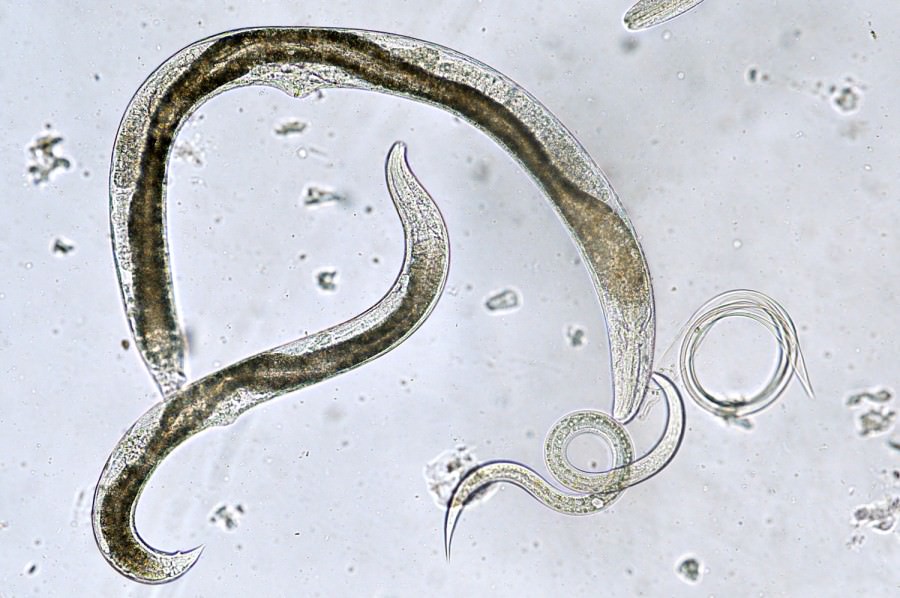Nematodes in Farming Systems
Nematodes contribute to a variety of functions within the soil. In farm systems, nematodes can enhance nutrient mineralization and act as biological control agents, and maintain adequate levels of plant-available nitrogen relying on organic sources of fertility. Nematodes also contribute directly to nutrient mineralization through their feeding interactions. Indirectly, nematodes enhance decomposition and nutrient cycling by grazing and rejuvenating old, inactive bacterial and fungal colonies, and by spreading bacteria and fungi to newly available organic residues. In the absence of grazers, such as nematodes and protozoa, nutrients can remain immobilized and unavailable for plant uptake in bacterial and fungal biomass.
Nematodes Activity
Inside the nematode is a symbiotic bacteria that when released inside an insect kills it within 24 to 48 hours. The nematodes penetrate the insect body and release their bacterial associates into the insect’s body cavity. These bacteria multiply and overwhelm the immune response of the host insect, ultimately killing the host. It also converts host tissue into nutritive products, which can easily be taken up by nematodes. Inside the dead insect, the nematodes feed and multiply. As the food resources within the dead pest become scarce, the nematodes will exit the dead insect and immediately start searching for a new host.
Soil Nematode Communities
In the soil are present different feeding groups of nematodes, which community vary between farm systems and seasons, and they are influenced by a variety of factors, including crop and soil management practices and the presence and abundance of natural enemies. Management practices like tillage, crop rotation, and the use of organic materials influence the physical and biological characteristics of the soil that influence the abundance of nematodes. Although nematodes are already present in the soil, farmers often need to add them additionally (in the form of dust) to be the insufficient quantity to treat insect pests.
Soil nematodes under the microscope
How to Apply Nematodes?
The solution can be applied using a watering can, hose-end sprayer, backpack, or pump sprayer or through irrigation or misting systems, avoiding applying on the sun, as the nematodes are photophobic and do not like direct light. At the time of application, the soil should be moist and lightly watered immediately after application.
Implications for Farming System Management
Farm management may increase the abundance of soil nematodes, primarily with tillage and the incorporation of organic residues, which increase the abundance of bacterial-feeding nematodes. Soil conditions in farm production systems can be improved by enhancing nutrient availability and providing habitat for beneficial soil organisms.
Using of nematodes enhances soil productivity while using of AGRIVI farm management system enhances farm productivity. The system helps you track all activities on farm, manage inputs and analyze farm’s productivity and profitability.





